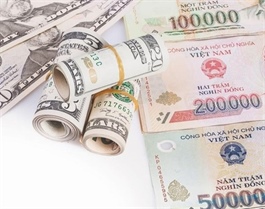Banks inject over US$20 billion into economy in June, surpassing five-month total
Banks inject over US$20 billion into economy in June, surpassing five-month total
The surge in credit following a period of stagnation is partly attributed to increased borrowing and corporate bond issuance in the latter half of the year.
The banking sector injected VND480 trillion (US$20.43 billion) into the economy in June, surpassing the total capital absorbed during the first five months of the year, according to statistics from the State Bank of Vietnam (SBV).

BIDV staff adjusts lending rates. Photo: Pham Hung/The Hanoi Times |
According to data from the central bank, the total credit outstanding for the entire economy by the end of June increased by about 6% compared to the beginning of the year, reaching nearly VND14,400 trillion ($613 billion).
Meanwhile, the credit growth rate by the end of May was only 2.4%. This means that credit grew by 3.6% in June alone, resulting in the economy absorbing VND480 trillion ($20.43 billion), which is higher than the total amount injected by banks throughout the first five months of the year.
Last month, the Prime Minister tasked the banking sector with achieving a credit growth rate of 5-6% by the end of the second quarter.
SBV’s Deputy Governor Dao Minh Tu then instructed banks to intensify their lending efforts, stating that credit growth targets for underperforming units would be adjusted to allow banks capable of expanding their lending to do so. The rebound in credit following a period of stagnation is partly attributed to increased borrowing and corporate bond issuance in the latter half of the year.
FiinRatings expects credit demand to accelerate in the second half of the year due to a recovering macroeconomic environment. The manufacturing sector shows signs of recovery, with the industrial production index estimated to have increased by 6.8% over the same period in 2023 and the processing and manufacturing sector rising by 7.3%.
Exports have also picked up as major markets recover. The trade deficit in May, driven by increased imports of raw materials, indicates a recovery in the manufacturing sector, signaling a positive outlook for businesses' ability to absorb capital, according to the report.
Additionally, FiinRatings suggests that credit growth in the real estate sector, including investments in real estate corporate bonds by commercial banks, will likely recover as legal obstacles are gradually resolved. New laws are also expected to create more favorable conditions.
























